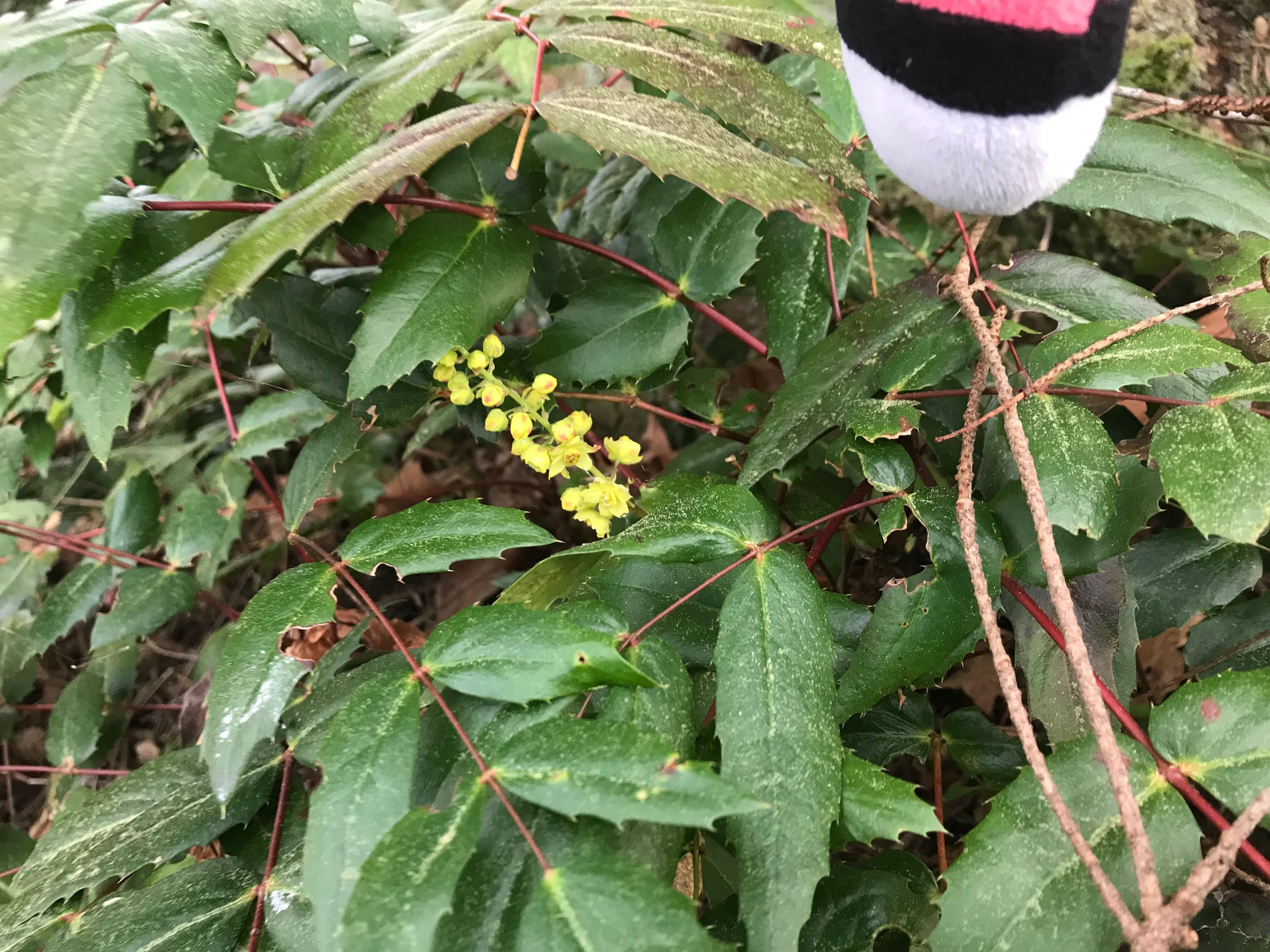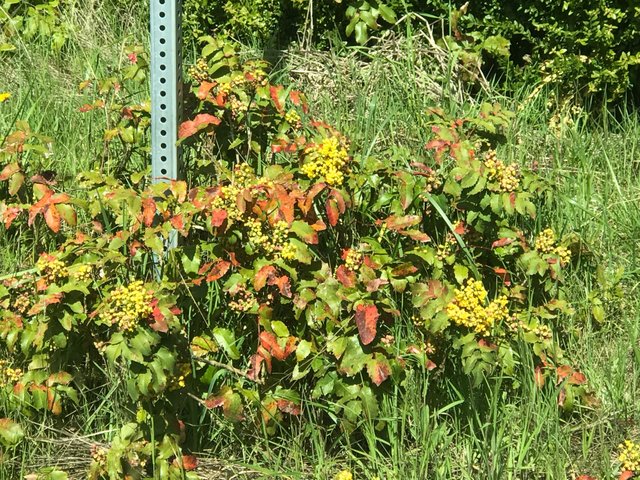DULL OREGON GRAPE• Mahonia nervosa
This plant is an erect, rhizomatous*, evergreen, stiff branched shrub. It’s leaves resemble holly and it’s got bark and yellowish wood.
(*A rhizome is an underground, often elongated stem; distinguished from a root by the presence of nodes, buds, or scale-like leaves)
The leaves are clustered, long, alternate and can be purple or reddish during the winter months. This plant has 9-19 leathery leaflets, somewhat shinny on both sides. Several prominent spiny teeth can be observed. (Think English holly)
The flowers are bright yellow, with flower parts in 6s. Meaning flowers will almost always be in multiples of six. The fruit is blue and grows in clusters kind of like grapes. They are edible, BUT NOT IN LARGE QUANTITIES! Read on to find out why.
Commonly found in second-growth, closed canopy Douglas-for forests about 50-100 years old. The tart, purple berries were eaten but often mixed with salal or another sweeter fruit. Today they are used to make jelly and some people even make wine from them. The bark is bright yellow inside because of the alkaloid, berberine. The shredded bark of the stems and roots was used to make a bright-yellow dye for coloring baskets and other fabrics. The bark and the berries, allegedly, have medicinal properties. Pacific north-west tribes used them for liver, gall-bladder, and eye problems. One tribe, the Saanich, believed that eating the berries in quantity was the only known antidote for shellfish poisoning.
GREAT CAUTION NEEDS TO BE OBSERVED, BECAUSE THE DRUG PRESENT IN THIS PLANT IS VERY VERY POTENT!

Photography by sapper11g
Location Washigton State
Apple iPhone X
Resteemed by # BlogBooster and the curation trail. Upvote come tomorrow as we ran low on vote-power!
Have a great day!